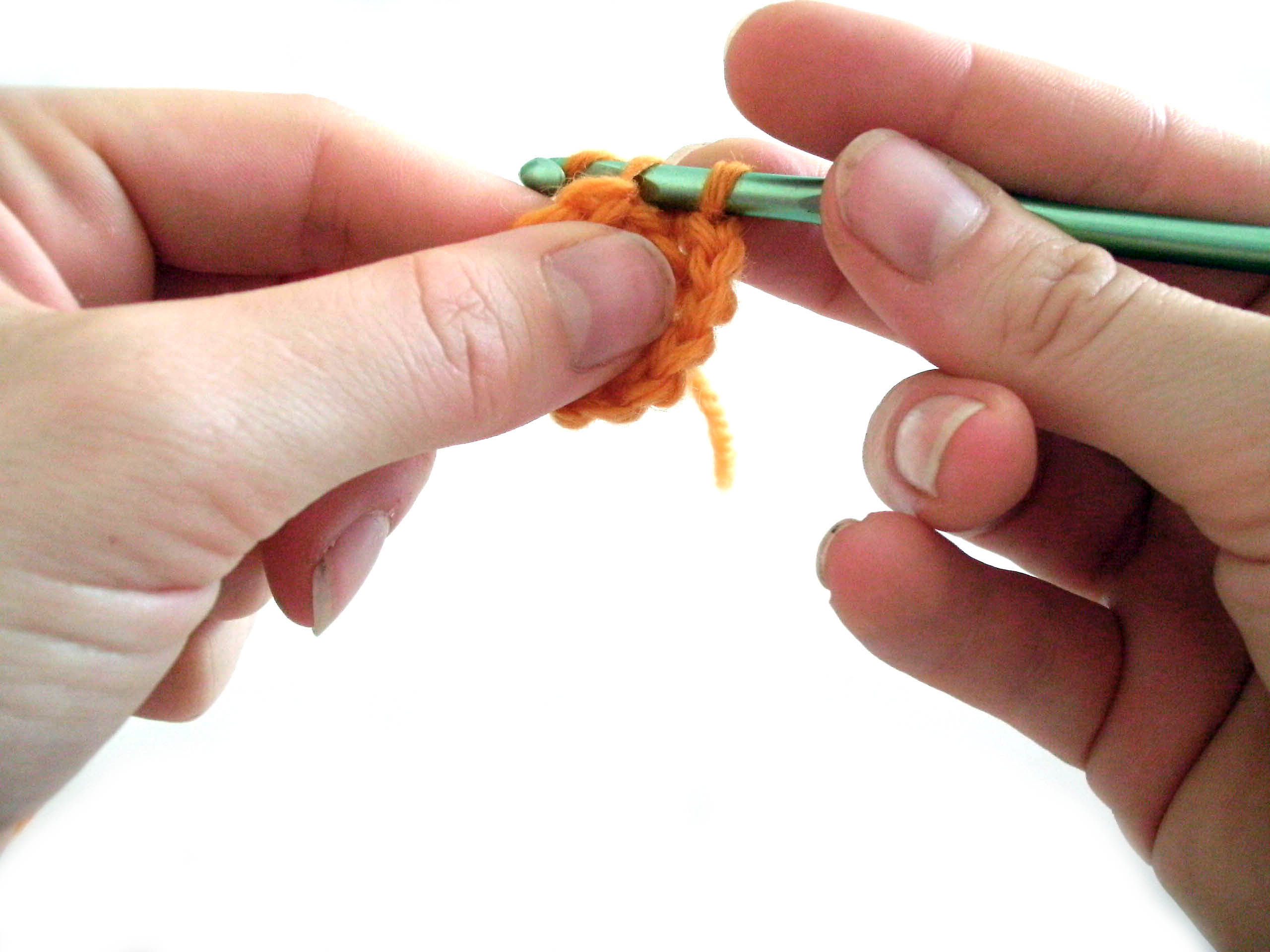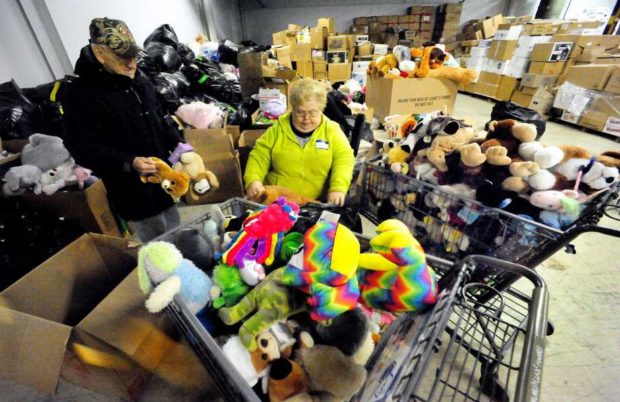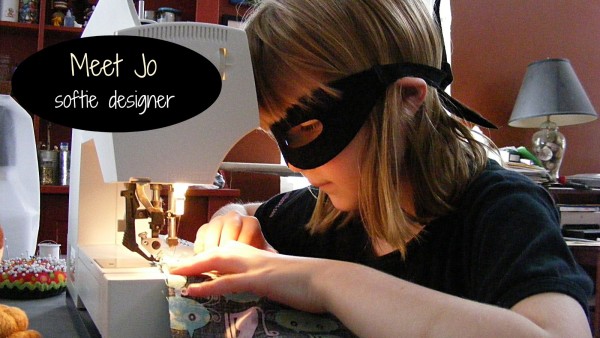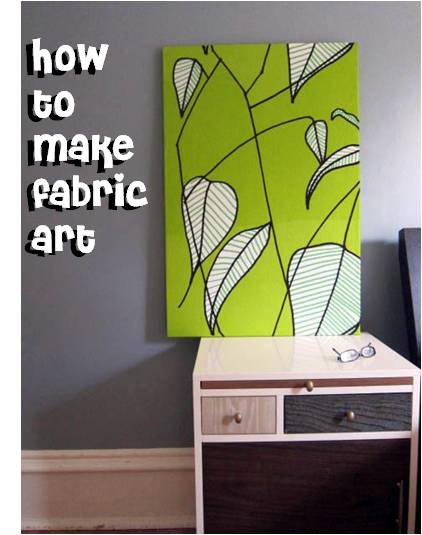Look! It’s a clean sewing room!
Over the years I’ve thought a lot about showing the space I work in here on the blog. But – frankly – it’s always been a bit of a mess. More than a bit, actually. If you follow along on Facebook you know I spent the last week doing a MASSIVE declutter. My husband has been doing the same thing in his office and between us we’ve gotten rid of five carloads of stuff. (Now it’s time to tackle the rest of the house.)
I put a lot of thought into my decluttering this time and I was far more successful than I’ve ever been before. I wrote a post about how to declutter a craft room here – and you can see some scary before photos. 🙂 But for now, I’m (finally!) going to share photos of my clean sewing room, followed the rest of the week with more specific posts about how I tackle some of the most common craft-supply storage issues.
First up is a bird’s-eye view of my space.
I took this photo from the top of the stairs to my husband’s office, which overlooks my studio. He writes children’s books and also works from home. It’s nice having our spaces adjacent so we can holler back and forth at each other throughout the day.
I love my space! It has lots of windows and terrific natural light. Please ignore the fact that none of those windows have trim yet. It will happen someday, but the fact that it took me five years to remove all the factory stickers from the windows might be an indicator of something. . .
I’m going to start my tour at the ironing board (the purple bit at the right of the photo) and take you counterclockwise around the room. But first – look up!
Technically I guess you’d be looking straight ahead from your stop at the top of the stairs. The corner over my ironing board has this support beam that I painted a pretty blue and then wrote “make” in purple. That’s what I do here! I love the glass baubles hanging from the support. And just to the left of the windows hangs my very first quilt. (More info about that here.)
If you walk down the stairs you’ll run into my supremely awesome ironing board. It’s an Ikea hack and I posted all the details and instructions here.
The baskets and drawers are a later addition. (More Ikea stuff). All my wool felt is stored in the drawers. The blue cubbies are for general supplies (starch, water bottle for filling my iron, embroidery hoops, etc.). The natural baskets hold a lot of the tools and supplies I sell in the shop.
Keep moving to the left and you come to my desk, with some things I love hanging over it. I especially love these toys by Amanda Visell.
And here’s my desk itself. It’s a hollow-core closet door from Home Depot sitting on two glass-fronted end tables from Target. It’s the best desk ever!
The scanner and two printers used to be stored under my old desk so that I had to sit on the floor every time I wanted to use them. My back is very glad I don’t have to do that anymore. 🙂
See the tiny bit of orange hutch in the top left corner? That’s next.
The jars in this hutch hold buttons, trim, elastic, eyeballs and more fun stuff – but it’s also a place where I put random things I love, like this. . .
Behind the doors at the bottom of the hutch are random office supplies and all my shipping supplies.
If we keep moving left we’ll zoom past a tall bookcase full of kids nonfiction books. . .
. . . and come to these low bookshelves where I store all my kits.
Turn the corner and this is where I store Cuddle Fleece.
The quilt over the top keeps the bolts safe from sunlight and dog hair. 🙂
Turn the corner again and you’ll pass my washer and dryer, the door to Jo’s room, and a (probably overflowing) laundry hamper before you come to this.
The right bookcase is all my picture books – great reference for when I need to know what a crocodile might look like standing upright on his back legs. 🙂
The left bookcase is all my craft/sewing/drawing/design reference books and sketchbooks, plus a few favorite things like the Party Animals.
There’s a new guy ready to join the party soon!
Continue left and there’s this long row of low bookcases along the half-wall overlooking my dining room.
This is where I keep thread, beads, markers, paints, glue, my tool basket, files of patterns in progress, and other stuff. It’s just a step away from my main work table so it’s really handy. If I want to keep a clean sewing room – I need to make it easy to put things away properly. Otherwise I’ll let those supplies pile up.
Now we’re back to the stairs. Under the stairs is some pretty art. . .
. . . and this piece of furniture.
The striped bins hold my scraps and behind the doors you’ll find paper, extra printer ink, and random, bulky weird-shaped things like my tripods.
On the wall above the stairs (as you head back up to my husband’s office) is a collection of some of my favorite children’s book art.
It’s impossible to shoot a photo without getting sun glare – I’ve tried every time of day and every time of year. But there’s some great stuff up there!
We skipped a couple of tables in the middle of the room.
This is my main work table with a big cutting mat up top, and fabric storage underneath. (And Augie Dog peeking in the side of the photo.) It’s between my desk and the low storage shelves.
Just past it you can see my sewing table – the magenta one.
That table top is a collage of picture book pages with a layer of clear epoxy over it. I love it! You can see how I did it here. There’s a futon backed up to the sewing table, because my studio is also the guest room. 🙂
And that’s it! My clean sewing room! More details coming every day this week about fabric storage, tool storage, embroidery floss storage, and pins & needles.
I hope you enjoyed the tour! Happy Monday!
























































